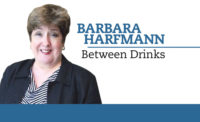Chicago-based Information Resources Inc. (IRI) released two new major demographic segmentations to help consumer packaged goods (CPG) manufacturers and retailers better understand consumers. The NutriLink segmentation classifies U.S. consumers into six groups based on their behavior and attitudes toward health, diet and nutrition, as well as their demographics, while the SilverLink segmentation specifically analyzes U.S. adults aged 50 and older based on demographics; attitudes toward aging, health and wellness; shopping behavior; and lifestyle habits.
Nearly one-third of the U.S. population is obese today, and experts anticipate an increase to 50 percent by 2030, according to IRI. Consumer attitudes toward health, exercise, diet and nutrition vary drastically: Natural and organic product sales are at an all-time high, yet fewer than 5 percent of adults participate in 30 minutes of physical activity daily, it says.
To better understand these varying attitudes, IRI segmented the U.S. consumer population into the following six sub-categories under NutriLink.
• Fast & Frugal — Taste and price are key concerns for these shoppers, who have a median income of $36,000, a median age of 46, and make up 26 percent of shoppers. As a result of their on-the-go lifestyles, they rarely exercise and prefer foods that are quick and easy to prepare or ready to eat.
• Sensible Super Moms — To ensure that they and their families look and feel good, these savvy moms prioritize eating right and exercising. They prefer fresh food and actively seek information about nutrition and healthy eating but also think that indulgent snacks can be part of a healthy diet. With a median income of $46,000 and a median age of 42, Sensible Super Moms account for 20 percent of the population.
• Wise & Healthy — With a median age of 68 and median income of $49,000, these shoppers are not as adversely affected by changes in the economy and can afford to buy healthy, nutritious groceries. They make an effort to exercise daily and prioritize eating healthy food at least 80 percent of the time in order to stay healthy and disease-free. Sixteen percent of shoppers fall into the Wise & Healthy segment.
• Healthy Chic — These shoppers are actively trying to improve their eating habits and tend to follow strict diets or eat healthy at least 80 percent of the time to stay healthy and maintain or lose weight. This group enjoys a median income of $76,000, has a median age of 44, and accounts for 16 percent of the population.
• Convenient & Content — This group does not put a premium on diet or exercise. Their food choices tend to revolve around taste and convenience rather than health. With an average age of 54 and a median income of $65,000, they are not particularly affected by changes in the economy. Convenient & Content consumers represent 14 percent of the population.
• Carefree Coasters — These shoppers generally eat on the run and are largely indifferent to taste, freshness, healthiness and price. With a median age of 50 and a median income of $38,000, they spend very little time thinking about what they eat and are not concerned about calories or other nutritional aspects of food. Carefree Coasters account for 9 percent of the population.
Although very different, each NutriLink segment is targetable, and each offers unique opportunities for CPG manufacturers and retailers, IRI notes. For example, Fast & Frugal shoppers will be drawn to inexpensive, prepared single-serve meals, while Healthy Chic and Wise & Healthy shoppers will be eager to try new healthy and organic products.
Varying attitudes about health and wellness, as well as attitudes toward aging and shopping, shopping behavior and lifestyle habits also are visible among the 50 and older age cohort. According to IRI, older Americans represent a powerful cohort, and the number of Americans aged 65 and older is expected to more than double during the next 40 years. Since 2007, real median income has declined for all age groups except those aged 65 and older. In fact, this age group actually saw a 5 percent income increase from 2007 to 2010. The likelihood that an American who reaches the age of 65 will survive to age 90 also has nearly doubled in the past 40 years, so investing in these shoppers now is more important than ever, IRI reports.
To help CPG marketers and retailers understand and achieve greater activation of the growing population of older shoppers, IRI’s SilverLink segmentation breaks down the age 50 and older demographic group into the following six consumer segments:
• Secure — With a median income of $58,000, these shoppers think they have enough money for a comfortable retirement. They consider themselves to be in good health, prioritize exercise, and try to eat a healthy diet about 80 percent of the time. These shoppers are ideal targets for nutritious items that support a healthy lifestyle.
• Conscientious — These shoppers are diligent about their health and their finances and have a median income of $37,000. They monitor their diets, both to maintain a healthy weight and to feel good. Deals and coupons are key to attracting Conscientious consumers, and they will be particularly receptive to online promotions, as they love technology and social media and often research new products online.
• Preoccupied — Unlike Conscientious and Secure shoppers, consumers in the Preoccupied segment do not focus on exercising or improving their diets, although they know they should. With a median income of $51,000, these shoppers often are on the go and generally choose convenience over nutrition. Although this group stands out because of its lack of commitment to healthy eating, CPG manufacturers and retailers still can entice this group through simple, convenient offerings, such as prepared single-serve meals.
• Unconcerned — These consumers are content with their lifestyles and have a median income of $42,000. Although most would like to lose at least 10 pounds, they do not make exercise or healthy eating a priority.
• Resistant — With a median income of just $32,000, the Resistant segment is the worst off financially. They also are not particularly active, often as a result of mobility issues. This group would like to be healthier but lacks the financial resources to do so.
• Resigned — Like the Resistant group, Resigned shoppers also are suffering from physical deterioration and struggle to make ends meet. With a median income of $34,000, they prefer foods that require little preparation, often choose convenience over nutrition, and tend to eat lots of processed foods.
The first three segments present particularly strong growth opportunities for manufacturers and retailers and account for a combined 52 percent of the aged 50-and-older population, IRI adds.



